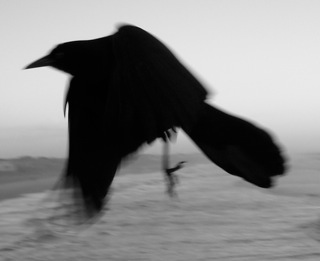What a buzzkill
 Thursday, August 16, 2012 at 10:44AM
Thursday, August 16, 2012 at 10:44AM First let me say, I hate bugs. Seriously? You could get me to denounce my own flesh and blood by putting a bunch of bugs on me.
Please don't do it.
The ones that crawl are nightmarish enough but airborne ones -- especially the flying kind with stingers -- are the stuff of pure terror.
(I come by this fear honestly. Once when my sister and I were still little enough to take baths together, our mother threw a brown glass bottle of insecticide at a flying roach in our tiny bathroom. The bottle shattered on the pink tile tub surround, showering our tender pates with poison and glass shards. Nice going, Mom. Maybe that's why I've never been "quite right.")
So anyway, imagine my chagrin when yesterday as I sat outside on the steps of our deck scritching Javier's ears, I heard a buzzing sound so loud, I immediately considered freaking out.
BUZZZZZZZZ -- ZZZ -- ZZZZZZZZZ!!!
But I looked first, toward the buzzing sound, and it was this GIANT winged insect flying through the air while CARRYING A CICADA NEARLY TWICE ITS SIZE.
The cicada did not appear to be enjoying the ride.
(Speaking of cicadas, they are deafening this year, even more so as the summer draws to its close. I imagine they make for fairly juicy morsels if you're into that kind of thing.)
Now before you think I am making this up or that I was not quite awake or was dehydrated or had sunstroke or something, let me tell you:
I'd had plenty of sleep; I'd had my coffee; I hadn't been outside that long; I was not in direct sun; it wasn't all that hot to begin with; and what would be my motive for inventing such a story?
While you think about that, I will continue.
So anyway the giant flying insect, black and yellow with massive wings, hauled the cicada (which was not moving a muscle -- wait; do they have muscles?) over to the bricks of my house and landed there, above the door to the garage.
I told Javier to hang tight and keep a sharp eye (I mean really, if that bug could carry a cicada it might be able to heft Javier, who I would think is vastly tastier than a cicada), and I went to investigate.
While keeping a prudent distance.
I very briefly thought of going inside for my camera but honestly, I don't like bug pictures.
Because as previously established, I don't like bugs.
I got close enough to see (to my horror) that the enormous insect had a stinger in its tail which it repeatedly plunged into the cicada's back (wait; do they have backs?).
Then the evil thing took off again and flew away, over the fence, the immobile cicada still in its clutches.
I plucked Javier off the step and sat with him on the swing to soothe him. He started licking his paws.
Five minutes or so elapsed before the massive insect came back, bringing its cicada prey with it.
BUZZZZZZZZ -- ZZZ -- ZZZZZZZZZ!!!
Ack! I jumped up. The beast flew out of sight over the roofline. A couple of beats later it was back. This time it landed over on the ledge near the shed where we keep pool supplies.
Then, still with a firm grasp of its unstruggling captive, it flew the short distance down into a small area of foliage beside my deck.
That did it!
Advising Javier to avert his eyes (he was still licking his paws contentedly but I could tell by the set of his ears that he was even more scared than me), I got up and grabbed a can of wasp and hornet spray TG keeps by the back door.
It shoots a stream of poison a long distance so that you can stand back and if the varmint comes toward you, you can throw the (unbreakable!) can at its head, then cut and run.
Exit strategy in place, I aimed and prayed. I mean sprayed.
I'm not sure what the scientific explanation is for all this, but suffice it to say that the oversized flying stinging bug dropped the cicada like a hot potato (say it with me: suh-kay-duh, puh-tay-duh) and ceased all signs of life.
Forever.
I did a victory lap around the pool, then snatched Javier up and went inside.
Later when TG came home, I told him I had to show him something. "Go get a rake first!" I said.
My TG is so used to me being nuts that he didn't even look at me funny. He got a rake from the garage and came out the door right by where the bug still had a death grip on a blade of mondo grass.
I used the rake to bring its sorry but still-scary carcass out into the open.
Here I need to tell you about TG's beloved book: Reader's Digest North American Wildlife: An Illustrated Guide to 2,000 Plants and Animals.
We're on our second copy of this book. The first one we'd owned since time out of mind -- TG used it for years to look up stuff with the kids -- but for reasons not entirely clear to any of us, that volume is AWOL.
TG expressed frustration at not having the book anymore, so last Father's Day I sent the kids a link to the new, updated version.
They bought it for him and TG was thrilled. He loves to look up and identify plants, birds, insects, reptiles, fish, what have you.
To him I say, whatever keeps your dinghy afloat, Mr. Audubon.
OK so when I dragged the bug out into the light of day, TG became fascinated and next thing I knew, he'd borne it into the kitchen on a paper towel and put it down on the counter while I was cooking supper.
It was my turn to avert my eyes, and believe me, I did.
TG had his book and was excitedly flipping pages. Ignoring flora, he went straight to fauna.
Quick as lightning, he had it.
"It's a Cicada Killer," he said.
I was exasperated. "Well I know that!" I said. "But what's it called?"
"A Cicada Killer," TG enunciated as if speaking to one exceptionally addlepated.
Sho' nuff y'all!
The bug is prosaically (and descriptively) known as a Cicada Killer. More specifically for the purists among us, it is a Thread-waisted Wasp, Sphecius speciosus.
The book says the bugs grow to be one-fourth to one and one-fourth inches long, but our specimen? Two plus inches easy.
And there was a drawing of it in the book! Toting around a cicada that it had paralyzed!
Well shut my mouth.
Surviving cicada population, beware. Javier, remain indoors.
That is all!
 Jennifer |
Jennifer |  11 Comments |
11 Comments | 






























































































![Hold Back the Dawn [DVD] Charles Boyer; Olivia de Havilland; Paulette Goddard](http://ecx.images-amazon.com/images/I/41AkExBJQsL._SL75_.jpg)














Reader Comments (11)
OMG!!!! That POOR Cicada! I know they're loud but I still like them! I've never seen a Cicada Killer Either! You'd think with all the cicadas we have here, I might have at least seen one! Oh well, It's best that I don't! I'd chase the darn thing down to save the cicada!!
hughugs
Yuck! I'm not a fan of any bugs, especially big ones, and even worse with stingers! Glad you and Javier survived!
I actually jumped up and down in my chair reading this laughing. I love how you word things so as to not sound UNsympathetic just know that you had me in stitches SOLEY based on how you told the story, LOLOL!!!!!!!!!
I suppose bugs don't really bother me all that much, we really don't get to many, too cold. I'm sure I sons would have love TG's book.
Told the story, and exceptionally interesting to this reader. That's who you call an exceptional WRITER!!...............G.
My company, Bonco UnInc., has just what you need to keep Cicadas and their killers in check. Of course, anything flying or moving within 500 feet of the device would become a target...see details here:
http://skunkfeathers57.blogspot.com/2008/12/yet-another-holiday-gift-ideer-from.html
I am going show this to Jonnie, who is the master of all things waspy. He will love it.
Cicadas are terrifically nutritious, best served lightly toasted with wings removed.
Insects have plenty of muscles.
The "back" of an insect is best referred to as the dorsum.
Your wasp is a member of the family Sphecidae, the spider wasps. Members of this family prey on different insects and arthropods including spiders, caterpillars, cicadas and others. Females will dig holes in the soil, hunt and subdue a live arthropod, paralyze the prey by stinging, lay eggs on in, and bury it alive. The eggs hatch and the young consume the victim before emerging from the chamber as new adult wasps.
The wasp family Pompilidae is also known for preying on spiders in this manner and can be much larger than the Sphecideae. Some are even known to take down tarantulas.
When dealing with wasps and bees, you must remember that only the females will sting. The stinger is a modified egg-laying apparatus. The venom is produced by modified accessory glands that branch from the oviduct. So yes, wasps sting with their genitalia.
Why would anyone kill such a beautiful creature?
My son, the entomologist. Please pardon his inability to understand anyone who kills bugs. I kill bugs all the time.
And his tendency to speak of genitalia. And the last comment was from me, not him. And, as he admitted, entomologists kill more bugs than anyone.
I give up. I think i'm just digging us in deeper!